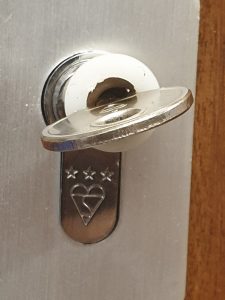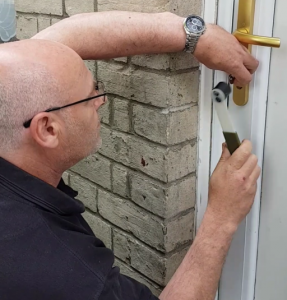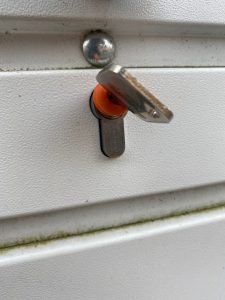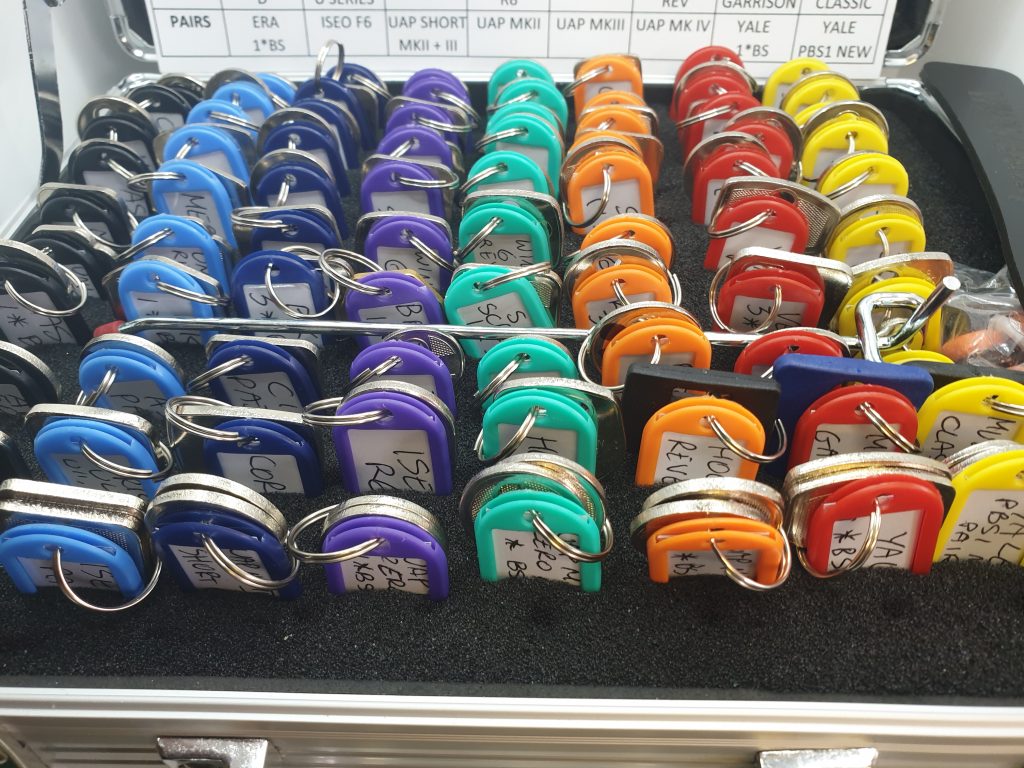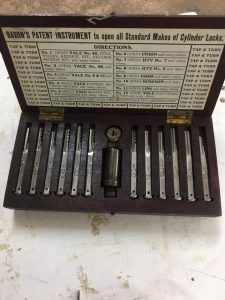 Lock bumping is nothing new. In fact, it can be traced as far back to 1925.
Lock bumping is nothing new. In fact, it can be traced as far back to 1925.
If you google the history of lock bumping, Wikipedia states incorrectly that “a US patent first appeared in 1928 by H. R. Simpson called a rapping key”. Many bump key selling pages state this, so straight away we can see that these pages do not really know much about lock bumping and have just copied and pasted information from Wikipedia.
In fact, here is a picture of a “Tap & Turn” kit in a wooden box with a patent dated July 17th, 1925, made by Baron’s. This kit included rapping keys for many cylinders which are now obsolete such as H&TV, Etas, Lips & Willen. This was not a tool kit to be carried to the customers’ houses for non-destructive openings, it was more of a bench locksmith’s tool kit for stripping down cylinders and re-pinning.
Lock bumping is still proving as popular as ever, and many locksmiths can still learn the art within a short period of time, allowing them to open many of the harder cylinders non-destructively and very quickly, making it an essential piece of kit for today’s locksmiths.
Wikipedia also states that lock bumping works similar to a Newton’s Cradle (Newton’s 3rd Law of Motion). His third law states that for every action (force) in nature there is an equal and opposite reaction. Many locksmith bumping selling pages simply state this law without going into depth on what actually occurs. When a bump key is inserted into a lock all of the bottom pins remain in contact with the key, once the key is struck the pins will fly up into the chambers and separate naturally at one critical point enabling the core of the cylinder to turn.
Can a cylinder lock that states it is “bump proof” or “anti-bump” still be bumped open?
Basically, the answer would be yes, in the same way that a cylinder that is advertised as “anti-drill” does not mean it can’t be drilled. It just makes the job of drilling it open more difficult.
In the same manner, an anti-pick cylinder can still be picked, although it would require a lot more skill, patience and practice than a standard cylinder would take to open.
When purchasing bump keys, it is always a good idea to make duplicates if possible as every bump key will get damaged over time, either by misuse or wear and tear. Bump keys, whether they are copies or original blanks, are still made out of standard brass or steel blanks and unfortunately are not made out of hardened steel as some would think. As bump keys are normally cut to their lowest cuts they can break very easily if not used or hit correctly. When hitting the head of a bump key it has to be hit square on, and many breakages of bump keys is caused by the bump key not being fully into the lock and then being hit sideways rather than head on. A bump key should never ever break off in a lock if used correctly.
Some people say they don’t like lock bumping because the key gets jammed in the lock or trapped by the pins. Again, this is only due to lack of training and skill; the pins can never trap a bump key in the lock as the cuts are cut to their lowest depths. The only cause for a bump key getting stuck or jammed in the lock is because the tip of the key has been smashed into the back of the lock and burred over. Once again, if the bump key was set up correctly this would never happen. If this does happen make sure the bump key is pulled out squarely and straight; do not wiggle the key because this is when it would break or snap.
Also, when purchasing bump keys, try and always buy them with the shoulders on. We personally teach three methods of using a bump key, and if bought shoulder-less then you only ever have the one option rather than the three.
You can use a bump key with the shoulder on, and then pull it out by 1 x cut. This is a one hit pull out method repeated over and over again until the lock opens, but is probably the hardest method to get right as the timing needs to be more critical than methods two and three, however it is still an essential method as many of the higher security cylinders open in this way.
If you are using a bump key with a shoulder on you should never really need to add dampeners. If you do, the shoulder just acts like a knife and will cut through the dampeners every time.
As dimple bump keys tend to not have a shoulder on like a standard cylinder key, it is critical to use harder dampeners to protect the tip from banging into the back of the lock, as the tip on most dimple cylinders acts as the shoulder.
The lightest tension is only ever required. Brushing the top and bottom of the key head with finger and thumb is all that is needed. Most of the problems I see when people start to learn bumping are caused by applying too much tension. If too much tension is applied all it does is bind everything up inside the cylinder. To give you some idea on a scale of one to 10, all you need to use is the lightest tension at about number one. Also, people tend to strike the bump key and then turn their hand hoping the cylinder will open. If the tension & strike is correct the cylinder will automatically turn on its own accord, and there is no need to physically turn the cylinder a second after striking the bump key.
The team behind Bumpkeys4U have been developing and supplying the locksmith industry with assorted high quality Bump keys for over 20 years in the UK and all over the world. With over 2,000 products on our website, including bump keys, accessories, obsolete locks, key blanks and key cutting machines, we are the leading supplier and manufacturer of bump keys in the UK and can always be found at locksmith exhibitions and Tradeshows, as well as teaching and developing new bump keys.
Most of our bump keys are supplied with the shoulder on as we feel this will give you more options in using them and allows you to set them up in different ways, as well as making it a lot easier to copy from.
Many bump keys are universal, but for ease we list most bump keys under their manufacturers name in order to make it easier for you to purchase that specific bump key, and thus have the confidence that it will work in that particular lock.
Are bump keys illegal?
Locksmiths and security professionals are permitted to use bump keys for legitimate purposes like opening locks for their clients, but they must have the client’s permission
 Once mastered, lock bumping can be one of the quickest methods of non-destructive openings – so it is well worth taking a little time and practice
Once mastered, lock bumping can be one of the quickest methods of non-destructive openings – so it is well worth taking a little time and practice
Brought to you by Mark Ward & BumpKeys4U

